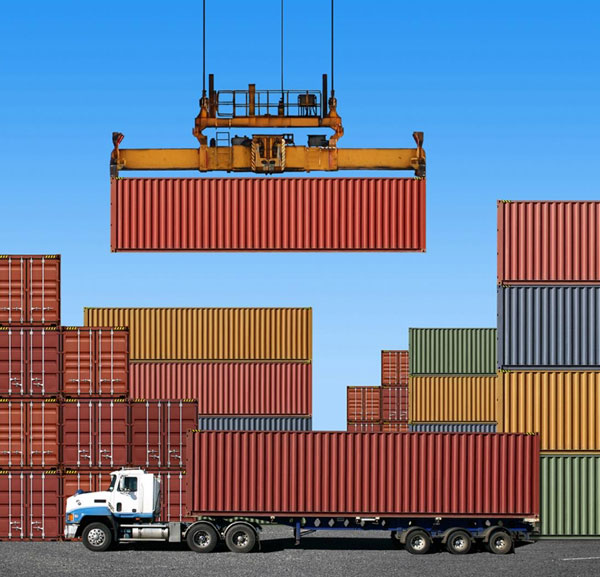In the field of international trade and logistics transportation, containers play a crucial role. As a standardized and modular cargo transportation unit, containers have a variety of sizes and types, adapting to the transportation needs of different goods. TOSELLSHIPPING will focus on exploring the internal dimensions and types of 40HQ containers, helping readers better understand and choose suitable container types.

What are the internal dimensions of a 40HQ container?
What are the types of containers for the ocean freight?
1、 What are the internal dimensions of a 40HQ container
The internal dimensions of a 40HQ are 12032mm in length, 2352mm in width, and 2698mm in height. The gross weight of a 40HQ is generally around 26 tons, which can normally hold approximately 68 cubic meters of cargo. This type of container is usually reusable, has a relatively long service life, and has sufficient strength.
2、 What is a container
A container is a standardized container that can be reused and is easy to load and unload quickly. There are 20 feet, 40 feet, 45 feet, 50 feet, as well as high cabinet HQ and heavy cabinet GP, as well as refrigerated cabinets, open top cabinets, liquid cabinets, etc. According to external dimensions, international standard containers have a width of 8 feet and a height of 8 feet, 8 feet 6 inches, and less than 8 feet; There are four types of lengths: 40 feet, 30 feet, 20 feet, and 10 feet.
3、 What are the types of containers
1. According to the type of goods loaded
It is divided into dry cargo containers, bulk cargo containers, liquid cargo containers, refrigerated container containers, as well as some special purpose containers, such as car containers, livestock containers, animal skin containers, etc.
2. According to manufacturing materials
It can be divided into three types: steel containers, aluminum alloy containers, and fiberglass containers. Manufacturing materials refer to the materials used for the main components (sidewalls, end walls, top of the container, etc.) of the container.
3. By structure
It can be divided into three categories: fixed containers, folding containers, and thin shell containers. In fixed containers, they can also be divided into closed containers, open top containers, and rack containers.
4. By purpose
It can be divided into refrigerated containers, hanging containers, open top containers, frame containers, tank containers, refrigerated containers, platform containers, ventilated containers, and insulated containers.
4、 What are the advantages of containers
1. Ensuring the security of the goods transportation network, container transportation greatly reduces the number of times manual loading and unloading and handling are required in the development process of traditional transportation in China. It can effectively avoid accidents caused by human or natural environmental factors such as damage, moisture, and loss of goods, and reduce the loss of social and economic benefits.
2. Saving packaging design materials for goods, using container transportation, can reduce unnecessary packaging, save packaging materials and costs, and lower commodity management costs.
3. Simplify transportation processes, improve operational efficiency, standardize container transportation, use containers as freight units, reduce tedious intermediate links, because container loading and unloading are suitable for mechanization, greatly shorten container stay time at ports (stations), accelerate ship turnover and cargo delivery, and effectively improve operational efficiency.
4. Reduce transportation and operational costs. As the loss of goods decreases, the relative cost of insurance also decreases; With more and more customers choosing door-to-door transportation services, the use of warehouses can be reduced, thereby greatly saving costs such as building and operating warehouses.
5. As a standardized transportation unit, containers provide convenient conditions for automated management, which is conducive to the development of cargo tracking and networked transportation progress.
We have learned about the internal dimensions of 40HQ containers, as well as various types of containers and their characteristics. When selecting containers, it is necessary to choose the appropriate type based on the characteristics of the goods and transportation needs. It is recommended to consult a professional logistics service provider before choosing a container to obtain more accurate information and personalized advice. In addition, it is crucial to pay attention to the quality and maintenance of containers to ensure the safety and smooth transportation of goods.